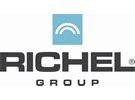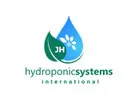The journey of the Spanish greenhouse industry, especially in the realm of tomato cultivation, is a dance between conventional methodologies and emerging technologies. Although a significant portion of production remains entrenched in traditional practices, the industry's gradual embrace of advanced techniques, including hydroponics and modern types of greenhouses, paints a picture of potential growth and adaptation, says Pierre Moulin, responsible for the Spanish market at the greenhouse building company Richel Greenhouses. "The yield per square meter can increase significantly with the right technologies, and so can the total turnover and profit of a company – but driven by high-interest rates and competition from Morocco, many growers currently focus on producing a low-cost product." Possibly, newly installed governmental subsidies will enable growers to take the leap. "We hope that growers can see what's possible from one of the newly installed projects."
Welcome to the vegetable garden of Europe. In Spain, according to the Ministry of Agriculture, there are just over 45,000 hectares of tomato cultivation, producing more than 3 and a half million tons per year. Of these 45,000 hectares, almost 29,000 are open fields, while about 15,600 are protected, greenhouse, or tunnel. According to the governmental numbers, Andalusia is the community that has the largest area of greenhouses dedicated to tomatoes, about 12,000 hectares.
"The majority of the Spanish greenhouse acreage, approximately 80%, consists of the traditional Almerian greenhouse: the Raspa y Amagado or Parral," says Pierre. This traditional Parral or Raspa y Amagado greenhouse is a simple coat of plastic on a structure made of wire and galvanized pipes, or even wood, making it hard to actively control the climate. "The Spanish climate is favorable for growing vegetables: the temperature is never under 10 degrees, and there's enough light to grow vegetables. And one of the strengths of the Spanish market is them being able to produce without much technology in winter. The industry's ability to produce without heavy technological interventions, such as artificial lighting and advanced climate control, is for sure a commendable strength," he sees. However, it simultaneously acts as a constraint, limiting the sector's capacity for further optimization and innovation.

"Another 20% of the greenhouse acreage consists of multi-span poly greenhouses, which is also what we offer to the market. These greenhouses are higher have more volume, which enables growers to stabilize the climate in their greenhouse. Also, thanks to the construction and the sustainable coverings, more light falls on the crop," Pierre says. "It enables growers to make the most out of the resources available: land, water, irrigation, fertigation." He adds that other types of greenhouses were evaluated in Spain. "Over the last years, also two Venlo-style greenhouses have been realized, which is the typical model from Dutch horticulture. These two are adapted for specialty tomatoes, but in general, realizing such a greenhouse doesn't make much sense as the costs are high in reference to the additional production realized – which is what matters most, after all."
As an example, he refers to the Abdera Green Farms greenhouse in Spain, a specialist in the production of cherry tomatoes. "The Multispan greenhouse with 6.5 meters under the gutter and 10 meters at the ridge brings better temperature homogeneity and cooler air, thanks to the white painted columns. By eliminating hot spots, optimal brightness is ensured." This grower also opted for energy-saving and shading screens. "The objective was to have a very bright greenhouse, to maximize tomato production in winter and minimize humidity. And thanks to the technologies installed and the investment made, this was achieved. Throughout winter, continuous quality and higher production can be reached."

Yet, despite these advantages, growers are not adopting these technologies on a larger scale. "Currently, we see mainly specialized companies, such as young plant producers or seed companies, opting for the Multispan greenhouses. We also see that visionary growers in the production of tomatoes, peppers, and cucumbers also make the transition to this model – but it's going slowly." According to Pierre, a big part of the Spanish industry's focus is on price-driven competitiveness rather than innovative breakthroughs, which has somewhat stymied its potential to harness advanced technologies for improved production outcomes. "Instead of looking at the potential of increasing production and quality by adapting technologies, many growers focus solely on the lowest price. This is driven by competition from Morocco and by the focus in the Spanish market, where a great focus also lies on the lowest price, even more focus than on quality."
The team at Hydroponic Systems recognizes this situation. The Spanish company offers easy-to-install systems to transition to growing hydroponically or to start hydroponic businesses. The sales team points out that in 2022, tomato production was 11,000 hectares lower than in 2021. "But of those 11,000, about 90% was open field; greenhouses remained the vast majority. This can tell us that the durability and profitability of a tomato greenhouse are greater, or the ability to withstand crisis situations, whether economic or climatic." However, they also see the industry is moving to more technical growing systems only very slowly. "From our experience, we do not have many cases of customers switching from soil to hydroponics; usually, our customers were already growing hydroponically or soilless and want to try our systems because they are more efficient. Therefore, we see a slight trend towards hydroponics without big increases. It requires a significant investment, and not everyone is willing to make it; in that sense, many Spanish farmers are not yet at the level of innovation of other countries, such as Holland, for example."
Governmental support
The Spanish industry is of vital importance to Spain itself and to Europe, but it is also facing new challenges. One of the critical challenges faced by the industry is the issue of water availability, particularly in regions like Murcia. Then there's labor, which, despite not being urgent in Spain yet, is expected to be more stringent in the future.
To address this concern, the government has initiated incentives to promote modernization and water-efficient practices: there are subsidies enabling growers to lower the investment needed for a new greenhouse or new technologies. For this, Brussels has approved 120 million euros in aid, taken from the recovery funds of the European Union, for Spain to support the transformation and modernization of greenhouses for vegetables, cut flowers, and ornamental plants.
"The subsidies were announced two years ago, and six months ago, the first projects have started thanks to this support. And I think that people need to see other people taking the leap, showing they can prove they make profits out of the technology, of the land, and resources available. Some tomato producers are able to produce up to 25kg/m² with good technology, while it's hard to produce more than 12kg/m² in a Raspa y Amagado greenhouse.
Pierre is assured the noteworthy projects stand as potential harbingers of change. "We see big players like Perichan, Paloma, and Bonnysa currently combine both forms of production. These enterprises have the potential to illuminate the profitability associated with embracing advanced greenhouse techniques, motivating their peers to follow suit."
For more information: Richel Group
Richel Group
[email protected]
Quartier de la gare
13810 Eygalieres, France
Tel.: +33 (0) 4 90 95 14 68
Email: [email protected]
www.richel-group.com

Hydroponic Systems
[email protected]
www.hydroponicsystems.eu
